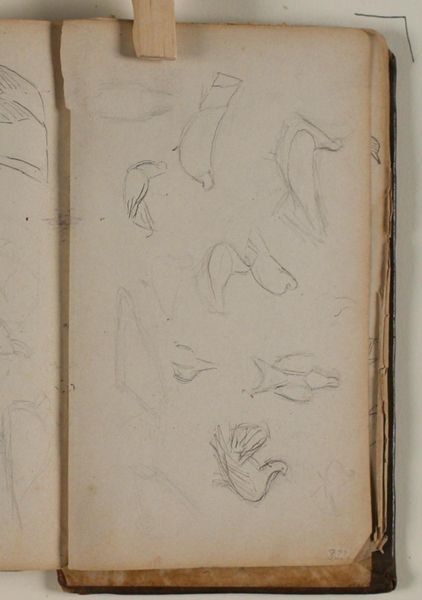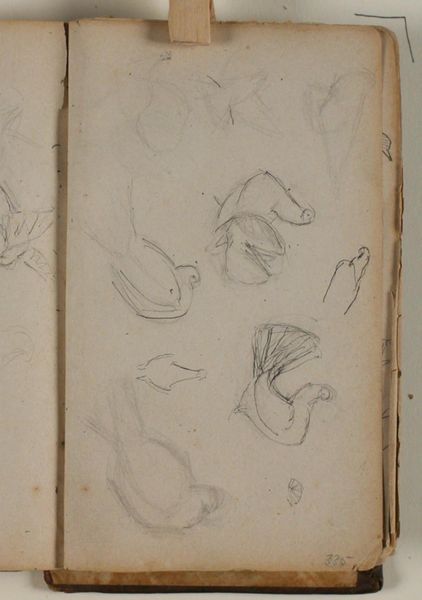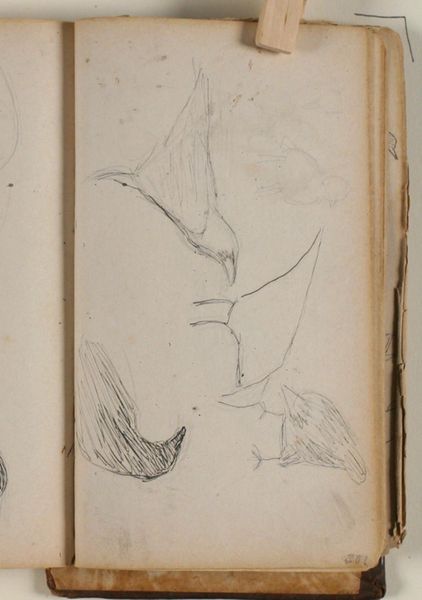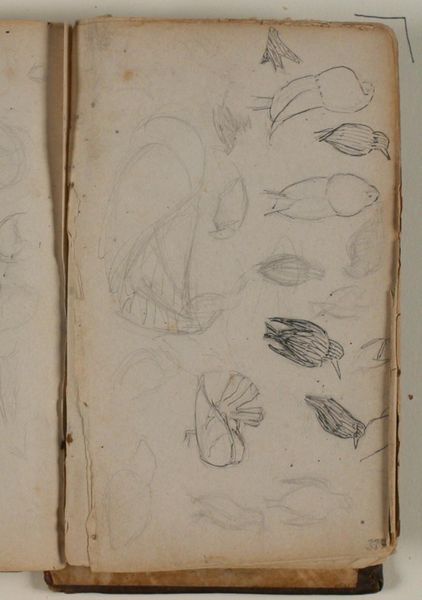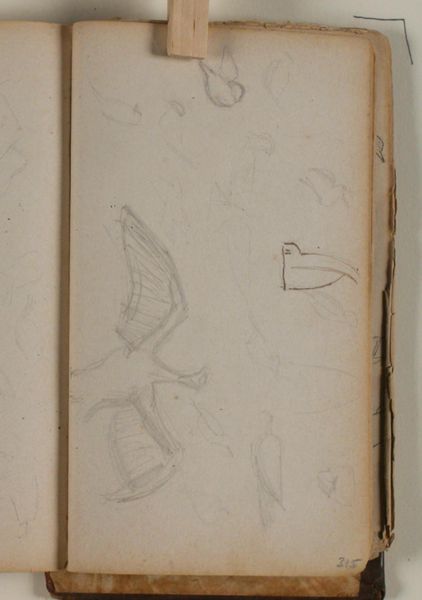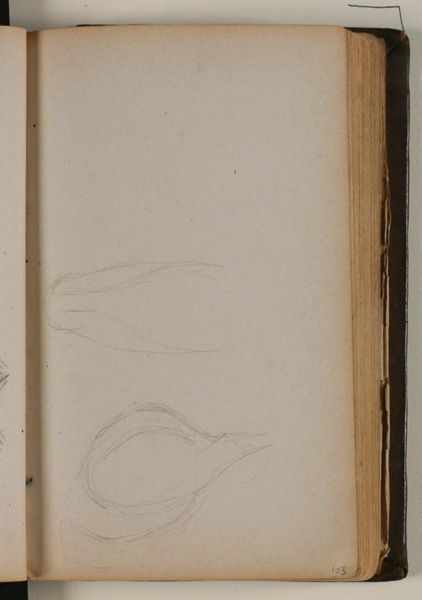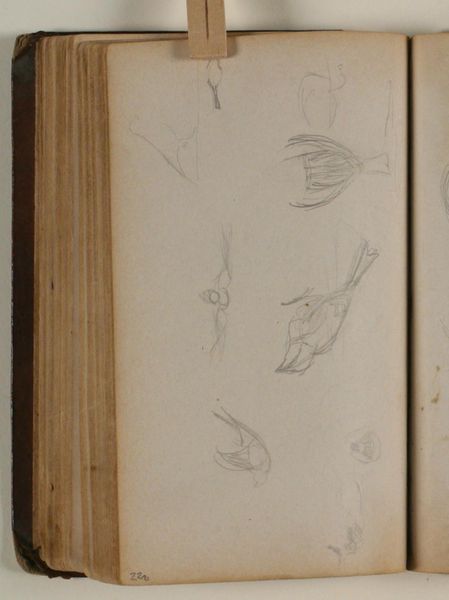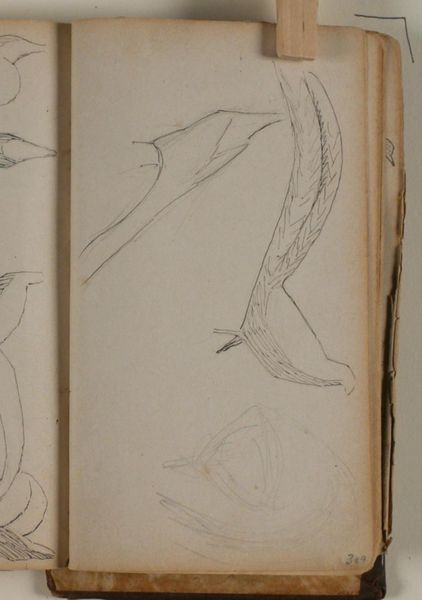
drawing, paper, pencil, graphite
#
drawing
#
figuration
#
paper
#
pencil
#
graphite
Editor: Here we have "Studies of Crows" by Niels Larsen Stevns, created sometime between 1864 and 1941 using pencil and graphite on paper. The drawings are spread across two pages of what appears to be a sketchbook. They seem more like preliminary sketches than a finished piece, focusing primarily on the crows' heads. What can you tell me about this work? Curator: What strikes me is how this very intimate peek into an artist's sketchbook humanizes Stevns. It reminds us that even accomplished artists engage in the fundamental practice of observation and sketching. How do you think the context of the sketchbook—its inherent privacy—shapes our perception of these drawings? Editor: That's interesting. I hadn’t considered the sketchbook aspect influencing our perspective. I guess knowing it’s from a sketchbook makes it feel more immediate and personal. Like we are seeing his raw thought process. Curator: Precisely! It invites us to think about the socio-political climate surrounding art education at that time. Sketchbooks were essential tools, reflecting the institutional emphasis on naturalism and direct observation as a crucial step towards idealized representations. Editor: So, the act of sketching these crows was as much a part of his training as the final painting? Curator: Absolutely. And beyond just training, sketching from nature could also be viewed within the romantic movement, an attempt to glean wisdom or truth from nature in an increasingly industrialized world. These "studies" almost suggest more than the individual crow. What feelings do these crows evoke in you? Editor: I see. The quick, almost frenetic lines suggest movement, maybe even a sense of unease or alertness, crows aren't exactly known as calm creatures. Thinking about it now, in the face of rapid industrial change, crows could symbolize resilience, of clinging to life as it always had been. Thank you for your insight. It helps put a historical narrative in my experience. Curator: You're welcome. I think acknowledging the many ways an artwork operates socially and politically can only enrich our appreciation.
Comments
No comments
Be the first to comment and join the conversation on the ultimate creative platform.
